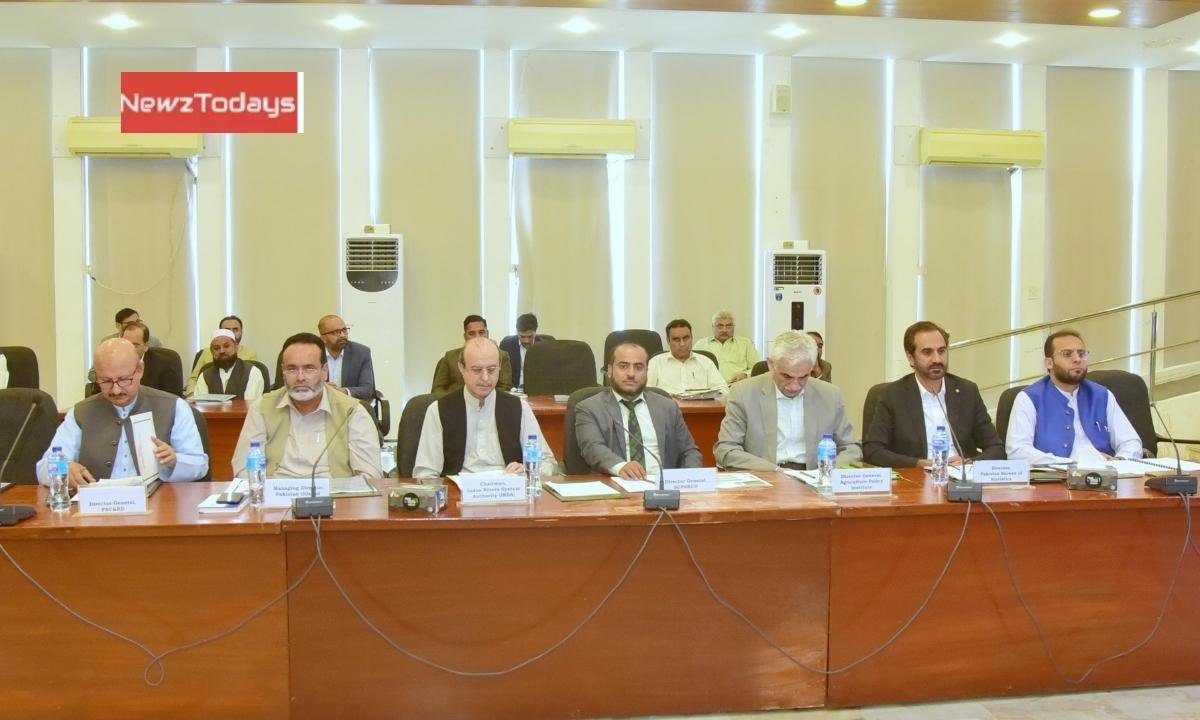Pakistan sets 29.7M ton wheat target for Rabi 2025–26
FCA fixes crop targets, reviews strong Kharif output and credit disbursements.
Pakistan has set a wheat production target of 29.678 million tons for the Rabi season 2025–26 over an area of 9.648 million hectares, the Federal Committee on Agriculture (FCA) announced following a high-level meeting chaired by Federal Minister for National Food Security and Research Rana Tanveer Hussain.
Read More: Check Out the Latest DAP Prices in Pakistan Today
The committee, which included provincial agriculture ministers, secretaries, and senior officials from federal and provincial departments, reviewed the performance of Kharif crops and approved production targets for key Rabi crops. Targets were also set at 393,000 tons for gram, 8.916 million tons for potato, 2.788 million tons for onion, and 659,000 tons for tomato.
The Ministry of National Food Security and Research said a new wheat policy had been finalized to ensure fair support prices, enabling farmers to cover costs and earn reasonable profit margins. Minister Hussain said the policy reflects the government’s resolve to protect farmers’ interests and achieve self-sufficiency in staple food commodities amid rising global price volatility.
The Director General of the Federal Seed Certification and Registration Department confirmed that certified seed availability for the Rabi season would remain satisfactory. Meanwhile, the Indus River System Authority (IRSA) projected no shortage of irrigation water for Punjab and Sindh, with provinces allocated a total of 33.814 million acre-feet (MAF) for the season.
According to preliminary estimates, sugarcane output for 2025–26 is expected at 84.7 million tons from 1.146 million hectares, marking increases of 5.5% in area and 5.9% in production compared with FCA’s earlier targets. Rice production is projected at 9.417 million tons from 3.039 million hectares—up 21.9% in area and 2.7% in output—while mungbean production is estimated at 150,800 tons, reflecting a 22.9% expansion in cultivated area over last year.
The minister commended the State Bank of Pakistan (SBP) for its role in boosting agriculture financing. During FY2025, Rs 2.577 trillion was disbursed in agricultural loans—achieving 100.2% of the target and registering 16.3% growth from Rs 2.215 trillion last year. SBP had earlier set an indicative lending target of Rs 2.572 trillion for the fiscal year, with participation from 47 financial institutions, including commercial, Islamic, and microfinance banks.
Fertilizer supply for urea and DAP is also expected to remain stable during the November–December Rabi planting period, according to ministry officials. The minister highlighted that the government remains committed to strengthening food security through better pricing mechanisms, easy access to credit, and provision of quality inputs to farmers.
Despite challenges from climate variability, floods, and global market pressures, provinces achieved strong Kharif crop results, supported by policy coordination and improved field practices. Hussain praised the resilience of farmers and provincial departments, noting that agriculture continues to underpin Pakistan’s economic stability, rural livelihoods, and employment.
The Pakistan Meteorological Department forecast below-normal rainfall for most areas in November–December 2025 but near-normal precipitation by January 2026, dismissing social media claims of an “extremely cold winter” as baseless.
Concluding the session, Minister Hussain reaffirmed that the government’s agricultural agenda—anchored on mechanization, irrigation efficiency, and R&D investment—will drive sustainable growth. He said the 2025–26 wheat target reflects Pakistan’s broader effort to secure food self-sufficiency and ensure that the agriculture sector, the backbone of the national economy, continues to power inclusive rural prosperity.
